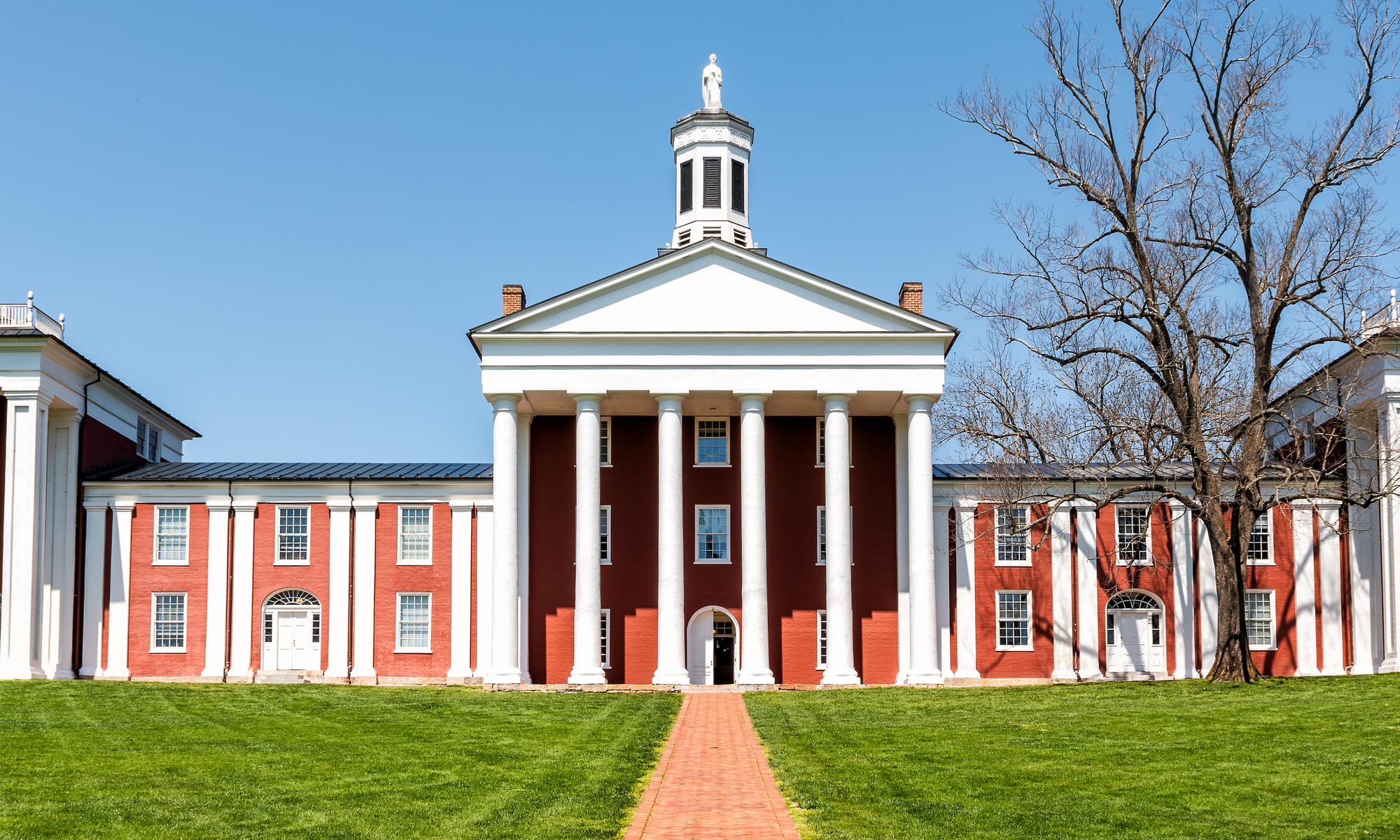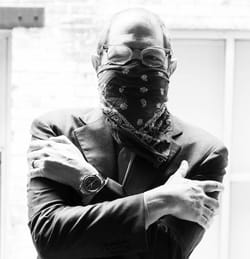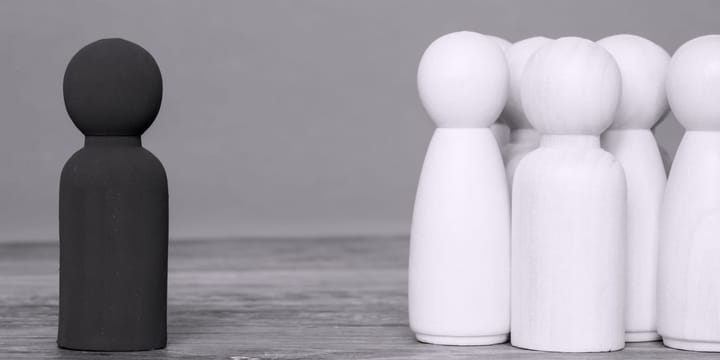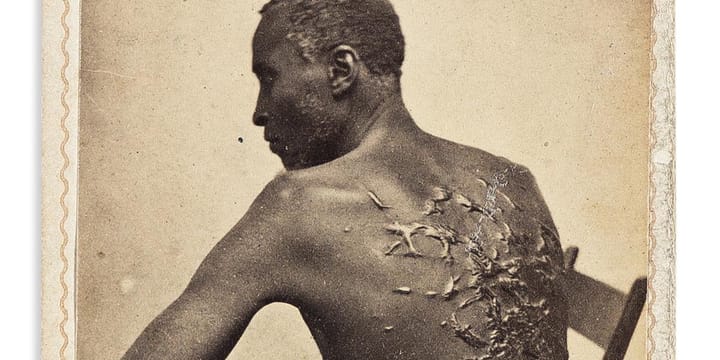More consequences and reactions to whitewashing the Smithsonian
The consequences of the Trump administration's sweeping efforts to whitewash American history at the Smithsonian and reactions to it.
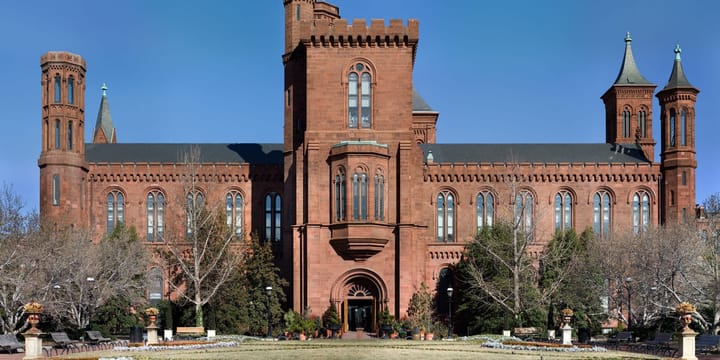
As noted here before, the Trump administration has launched an unprecedented white-washing campaign to reshape the Smithsonian Institution. To recap, he is demanding the removal of what it calls "divisive" content while targeting exhibits, artworks, and educational materials that address America's complex racial history.
The August 2025 formal letter to Smithsonian Secretary Lonnie Bunch demanded a "comprehensive internal review" of eight major museums. The directive calls for replacing "divisive or ideologically driven language." Of course, the administration's definition of what constitutes "accurate" history is pretty exclusively white.
Artists targeted for depicting American realities
The White House has published an official newsletter identifying specific artworks and exhibitions it finds objectionable. NPR ptovides a good overview, which is summarized here.
Among the targeted works is Rigoberto Gonzalez's 2020 painting "Refugees Crossing the Border Wall into South Texas," which depicts an immigrant family crossing the U.S.-Mexico border. The White House criticized the work for "commemorating the act of illegally crossing" the southern border. Alternatively, coming to America as a none-white person.
Gonzalez, an American citizen born in Reynosa, Mexico, rejects the administration's characterization of his work. "My work is political, and that painting in particular was questioning the anti-immigrant sentiment of the time," he said. The artist drew parallels to Nazi Germany's "degenerate art" exhibitions of the 1930s. Then, as now, the regimes targeted modern artists whose work didn't align with their ideology.
Other targeted artists include Amy Sherald. Sherald, known for her portrait of former First Lady Michelle Obama, preemptively canceled her upcoming Smithsonian exhibition. This exhibit would have included "Trans Forming Liberty," a painting of a transgender woman holding a torch. Sherald has described her current work as "counterterrorist attacks" against efforts to erase American history and Black American experiences.
Scholars labeled as "activists"
The administration has also targeted prominent scholars whose research addresses systemic racism. NPR also provides a list of these, which inludes Howard University professor Ibram X. Kendi. Kendi wrote "How to be an Antiracist." So of course, the White House has labeled hime a "hardcore woke activist." Kendi's work has also been featured at the National Museum of African American History and Culture.
"Those of us who study racism, who engage in rigorous research to try to explain what racism is have been typically described as activists, as opposed to what we are: scholars and intellectuals using research and analysis to try to present the truth." —Kendi
He further noted that such characterizations are designed to discredit scholarship and distract from research findings.
Hugo Crosthwaite's animated portrait of Dr. Anthony Fauci was also singled out, likely because it depicts someone who promoted vaccine technology during the COVID-19 pandemic. The artist suspects the targeting stems from Fauci's association with public health measures that have become as politically divisive as they are stupid.
Gullah heritage at risk
The review's potential impact extends beyond individual artworks to entire cultural traditions. WCSC Charleston reported on its effect on the rich traditiona of Gullah culture. Sweetgrass basket maker Corey Alston's work, currently displayed at the National Museum of African American History and Culture, could be removed under the administration's guidelines.
Alston's baskets represent a 300-year-old Gullah Geechee tradition that traces back to enslaved Africans who brought rice cultivation knowledge to the Carolina colonies.
"It's a great joy to be able to display our artwork at museum levels because it tells a story of our ancestry," Alston said. "For those that never heard of Gullah people, this is the conversation starter." He expressed concern that removing such exhibits would erase history that helped build America.
The Gullah Geechee Cultural Heritage Corridor, established by Congress in 2006, extends from North Carolina to Florida and represents a vital part of African American cultural identity. Michael Allen, a retired National Park Service historian, emphasized that "all voices and all stories need to be told and incorporated in the American journey."
"Focus on the positive"
White House official Lindsey Halligan is leading the Smithsonian overhaul. She has articulated the administration's vision in media appearances. Speaking on Fox News (and reported in The New Republic), she argued that the museums exhibit "an overemphasis on slavery" and should instead emphasize "how far we've come since slavery." (Sorry, still won't watch or link to Fox News.)
Halligan's approach reflects an effort to present what she calls a more "positive" version of American history; that is what we call a white-washed sanitized version. "We should be able to take our kids, our students through the Smithsonian and feel proud when we leave," she said, advocating for content that represents "our country in a positive way" rather than grappling with difficult historical realities.
This perspective has alarmed historians who argue that understanding America's full history, including its darkest chapters, is essential for genuine progress and education.
I don't know about you, but how this country has dealt with such ugly bits and moved beyond them while reckoning with them is a source of pride. Has that reckoning been delayed and many times incomplete? Of course, but the effort is still the thing.
Citizen response and documentation efforts
Concerned historians and citizens have mobilized to document the current state of Smithsonian exhibits before potential changes. (NPR reporting again before it, too whithers.) Georgetown University professors Jim Millward and Chandra Manning launched the "Citizen Historians" project, calling for volunteers to systematically photograph exhibits, wall text, and artifacts across the museum system.
"I'm a historian of China, and so I'm really used to when governments are stepping in trying to whitewash history and censor history," Millward explained. "It really upset me to see this being threatened in the United States as well."
The project has attracted hundreds of volunteers who have uploaded more than 25,000 photographs and videos to create an archive of current museum content. The effort takes inspiration from "Save Our Signs," effort to document National Park signage after the Trump administration called for visitors to report signs "negative about either past or living Americans."
hilling effect on cultural institutions
The administration's actions have created what's been called a chilling effect throughout the cultural sector. Artist Patricia Cronin, whose sculpture "Memorial to a Marriage"is part of the National Portrait Gallery's permanent collection, expressed concern about the broader implications. The sculpture depicts two women.
"Part of this whole censorship is to erase our history, but also erase our lives," said Cronin.
"If we're not allowed to be in public, or museums aren't showing the American story in its fullest complexities, it's going to be terrible for many artists who are making work that reflects their human experience."
Art historian Richard Meyer of Stanford University noted that the current situation differs from previous culture wars skirmishes, such as Robert Mapplethorpe's photographs in the 1990s. "I've never seen a list like this," he said. "It does remind me a bit of McCarthyism."
Meyer expressed particular concern about self-censorship among emerging artists: "The worst kind of censorship is when you never see the work or it's never made."
Historical precedent and broader implications
Several targeted individuals have drawn parallels to historical periods when governments sought to control cultural expression. The comparison to Nazi Germany's targeting of "degenerate art" is often cited. The comparison reflects broader concerns about governmental overreach in our own cultural institutions.
Kendi also noted similarities to the Jim Crow era, when segregationist politicians "were firmly against our public museums presenting an accurate picture of slavery, or the Civil War, of civil rights activism."
He pointed to historical efforts to present slavery as beneficial to African Americans. At the time, southern white society endeavored to "downplay or downgrade the level of horror and torture and terror that Black people faced." This, of course, was always in the background of the last cause fairy tale.
The current effort intensifies previous attempts to influence museum content. The White House is now directly naming specific artists, scholars, and works for removal or revision.
Museums under pressure
The Smithsonian Institution faces significant pressure to comply with the administration's demands because it receives federal funding, . While the institution has declined to comment on the White House list, it hsd stated its commitment to remaining "free from political or partisan influence."
The Smithsonian is the national repository of American culture and history. With 21 museums containing millions of artifacts, objects, and artworks, the institution serves as a crucial educational resource for millions of annual visitors. This unique place in our culture and history makes this effort all the more grim.
Four Democratic senators have urged the Smithsonian to resist. Sens. Catherine Cortez Masto, D-Nev., Gary Peters, D-Mich., and Sen. Jeffrey A. Merkley, D-Ore joined Alex Padilla, D-Calif. in calling for the instituiontion to resist what they characterize as White House attempts to "bully the institution." However, the practical reality of federal funding and political pressure creates a complex situation for museum leadership.
Yet another test for American democracy and society
The battle over the Smithsonian is a small part of the broader struggle over how America tells its story. The administration's wants to emphasize "positive" narratives and minimize the "inconvnient facts" of genocide, slavery, racism, and other difficult aspects of American history. This raises fundamental questions about the role of museums in democratic society.
As historian Chandra Manning noted, the Smithsonian serves as "a repository of human wisdom" that encompasses everything from "Jackie Robinson's jersey to prehistoric skeletons to Ming vases." The effort to selectively present this collection based on ideology threatens not only the institution's educational mission but also it's scholarly integrity.
The coming months will reveal whether the Smithsonian can maintain its commitment to presenting comprehensive, scholarly approaches to American history, or whether political pressure will fundamentally alter it. Thus, neutering one of the nation's most important cultural institutions.
For the artists, scholars, and cultural traditions caught in the crosshairs, the end game is now. For the citizenry trying to capture what they can while it remains, we salute you. Now we also must make our voices heard to our own representative and senators.
Non in cautus futuri.
